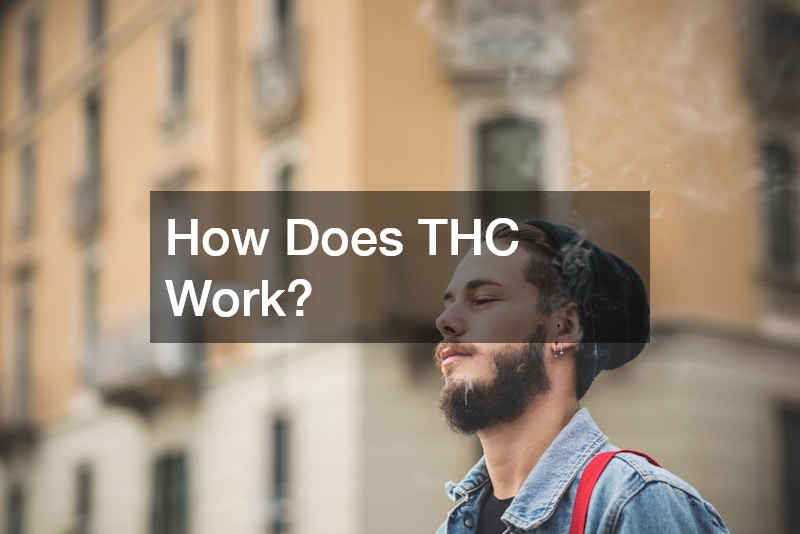
THC, or tetrahydrocannabinol, is one of the most well-known compounds found in cannabis. It’s responsible for the plant’s psychoactive effects, often referred to as the “high” that users experience. As the legal landscape surrounding cannabis evolves, more people are curious about how THC works in the body and why it produces such unique effects. Whether you’re new to cannabis or a seasoned user, understanding how THC interacts with the brain and body can give you better insights into its uses and benefits.
If you’re exploring the cannabis scene or looking for quality products, finding the best dispensary in Missouri is key. But first, let’s dive into the science of THC and how it works in the body.
1. What Is THC?
THC, short for tetrahydrocannabinol, is one of over 100 cannabinoids found in cannabis. Cannabinoids are chemical compounds that interact with specific receptors in the body to produce various effects. THC is unique in that it is the primary psychoactive compound in cannabis, responsible for the euphoric or altered state that users feel after consumption.
While THC is the most famous cannabinoid, it is one of many that work in tandem to create the diverse effects associated with cannabis. Other cannabinoids, such as CBD (cannabidiol), are known for their non-psychoactive properties and therapeutic potential.
2. How THC Interacts with the Body
To understand how THC works, it’s important to look at the body’s endocannabinoid system (ECS). The ECS is a complex cell-signaling system that plays a role in regulating a variety of functions, including mood, appetite, sleep, and pain. The ECS consists of three main components:
Endocannabinoids: These are naturally occurring cannabinoids that your body produces.
Receptors: These are found throughout the body and bind with endocannabinoids or cannabinoids from external sources like THC.
Enzymes: These break down endocannabinoids after they’ve completed their function.
When you consume THC, it interacts with the ECS by binding primarily to CB1 receptors, which are located in the brain and central nervous system. This interaction is what produces the psychoactive effects that cannabis is known for. THC also binds to CB2 receptors, which are more commonly found in the immune system and play a role in reducing inflammation and managing pain.
3. The Effects of THC on the Brain
The effects of THC on the brain are varied, which is why users report different experiences based on factors like dosage, strain, and method of consumption. When THC binds to CB1 receptors in the brain, it influences several areas, including:
The hippocampus: This is the part of the brain responsible for memory and learning. THC can temporarily affect short-term memory, which is why some users may experience forgetfulness while under its influence.
The cerebellum and basal ganglia: These areas of the brain regulate movement and coordination. THC’s interaction with these regions can cause the slowed reaction times or impaired motor skills that are often associated with being high.
The amygdala: This part of the brain controls emotions, particularly fear and anxiety. THC’s effects on the amygdala can vary, leading to feelings of euphoria in some users and heightened anxiety in others.
The hypothalamus: THC stimulates the hypothalamus, which controls hunger and appetite, often leading to the “munchies” that many users experience after consuming cannabis.
Finding the best dispensary in Missouri is essential if you’re seeking specific strains with tailored effects, whether you want to relax, boost creativity, or manage discomfort.
4. Medical Benefits of THC
While THC is often associated with recreational use, it also has significant medical applications. Many patients turn to THC for its potential to relieve symptoms of various conditions, including:
Chronic pain: THC’s interaction with CB2 receptors can help reduce inflammation and manage pain, making it useful for people with conditions like arthritis, fibromyalgia, and multiple sclerosis.
Nausea and vomiting: THC is commonly used to alleviate nausea and vomiting, especially in patients undergoing chemotherapy.
Appetite stimulation: THC can be beneficial for people with conditions that cause appetite loss, such as cancer or HIV/AIDS, as it stimulates hunger through its interaction with the hypothalamus.
Sleep disorders: Some users find that THC helps them relax and fall asleep more easily, making it a useful tool for managing insomnia or other sleep disorders.
When you visit the best dispensary in Missouri, the staff can help you select products that contain the right levels of THC to address your medical needs.
5. How THC Is Consumed
There are various ways to consume THC, each offering different experiences and effects. Some of the most common methods include:
Smoking: Smoking cannabis flower is one of the fastest ways to feel the effects of THC. The compound is absorbed into the bloodstream through the lungs, and users typically feel the effects within minutes.
Edibles: THC can be infused into foods and drinks, providing a longer-lasting but delayed effect. Edibles take longer to metabolize, often leading to effects that last several hours.
Vaping: Vaping heats cannabis oil or flower to produce vapor, which is inhaled and absorbed quickly, similar to smoking.
Tinctures: Tinctures are liquid cannabis extracts that are consumed sublingually (under the tongue). They offer a fast onset of effects and are popular among medical users for their precision in dosing.
Topicals: THC-infused creams and lotions can be applied directly to the skin for localized pain relief without producing psychoactive effects.
Each method of consumption affects how quickly and intensely THC works in your body, so it’s important to choose the one that best fits your needs. The best dispensary in Missouri can provide guidance on which method might work best for your experience level and desired effects.
.




